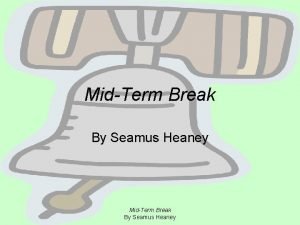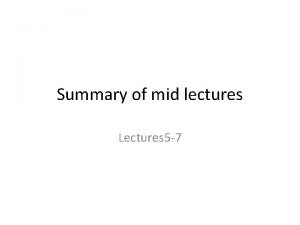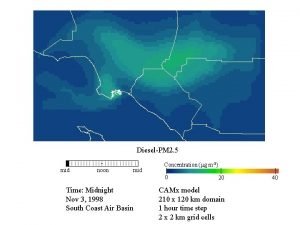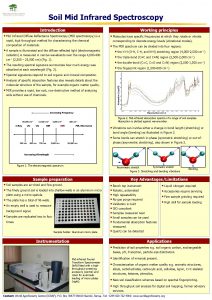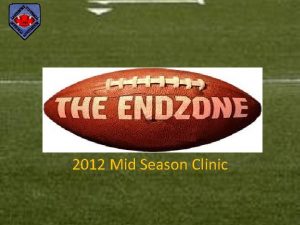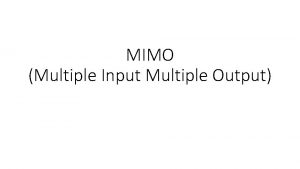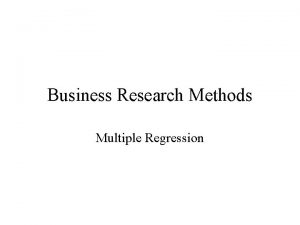Summary of mid lectures Lectures 5 7 Multiple

























- Slides: 25

Summary of mid lectures Lectures 5 -7

Multiple sclerosis • Autoimmune demyelinating disease • Episodes of neurologic deficits separated in time which are attributed to white matter lesions that are separated in space. • loss of tolerance of self-proteins in the myelin sheath. • Genetic and environmental factors play a role in this loss of tolerance.

morphology • White matter disorder • Multiple well circumscribed slightly depressed grey tan irregularly shaped lesions= plaques • Active plaques: ongoing myelin breakdown, macrophages containing myelin debris. Quiescent( inactive plaques): inflammation disappears leaving behind little or no myelin. Instead there is astrocytic proliferation and gliosis prominent

Post infectious demyelination • Not due to direct effect of the virus • Pathogen associated antigens cross react with myelin antigens…. Provoke autoimmune response against myelin • Onset: acute, monophasic

Neuromyelitis optica • • Inflammatory demyelinating disease Mainly optic nerve and spinal cord Antibodies to aquaporin-4 are diagnostic Previously thought a subtype of MS

Central pontine myelinolysis • Non immune process • Loss of myelin in centre of pons, but also can affect other sites. • Occurs after rapid correction of hyponatremia or after severe osmolar or electrolyte imbalances. • Edema due to sudden change in osmotic pressure probably is the cause of the damage • Causes rapid quadriplegia and can cause locked in syndrome

Neurodegenerative diseases • = Disorders characterized by cellular degeneration of functionally related neurones. • Many of them related to accumulation of abnormal proteins.

Abnormal protein aggregates in neurodegenerative diseases • Abnormally aggregated proteins often are directly toxic to neurons. ALL act as prions ( spread from one area of brain to another) • ALSO: There is loss of function m as more and more protein is shunted into the aggregates rather than performing normal physiologic functions.

Alzheimer disease (AD) • Most common cause of dementia • Gradual onset of impaired higher intellectual function + altered mood and behaviour. • Progresses to disorientation , memory loss, aphasia • Then. . Over 5 -10 years, become disabled, mute and immobile • Death due to infections, mainly pneumonia

pathogenesis • Alzheimer is caused by accumulation of two proteins: AB amyloid and tau in specific brain regions due to overproduction and decreased removal. • Both protein aggregates cause neural death and dysfunction. • The initial event is the AB accumulation.

AB amyloid deposition -Amyloid precursor protein (APP) is a cell surface protein with a single transmembrane domain - Point mutations in APP are a cause of familial AD

• APP gene present on chromosome 21. • Trisomy 21 (Down syndrome) have increased risk of Alzheimer • AMYLOID CAN ACCUMOLATE IN THE ELDERY WITHOUT CAUSING DEMENTIA

Tau protein • Tau is a microtubule-associated protein present in axons in association with the microtubular network. • In AD Tau becomes hyperphosphorylated, and loses the ability to bind to microtubules.

Microscopic changes • Amyloid plaques and neurofibrillary tangles. • Plaques are extracellular amyloid deposition ; tangles are intracellular Tau deposition.

Fronto-temporal lobar degeneration (FTLD) • Heterogeneous group of diseases associated with focal degeneration of frontal and/or temporal lobe. • Differ from Alzheimer by : changes in personality and language precede memory loss. • With time. . The disease progresses and dementia occurs.

etiology • Accumulation of abnormal Tau protein. Tau in FTLD accumulates in two forms: • 1. neurofibrillary tangles; like those seen in Alzheimer ( but in FTLD there is only Tau and no amyloid aggregates) • 2. smooth inclusions = Pick bodies. . This subtype of FTLD is called Pick disease.

Tau protein • Is a phosphoprotein that interacts with microtubules and stabilizes them. • When Tau is hyperphosphorylated two changes occur: 1) its ability to bind with microtubules decreases and 2) its ability to aggregate increase.

Parkinson disease • Parkinsonism: Tremors, rigidity, bradykinesia and instability. • Caused by damaged dopaminergic neurones that project from substantia nigra • Parkinsonism can be due to 1) dopamine antagonists , 2) toxins • 3) Or: can be caused by Parkinson disease (neuro-degenerative disorder)

Parkinson disease signs and symptoms • • • Diminished facial expressions ( Masked facies) Stooped posture Slow voluntary movement Rigidity Pill rolling tremor Festinating gait= progressively shortened accelerated steps.

Clinical features • Movement disorder. • Progresses over 10 -15 years. . Severe motor slowing • Death: infections and trauma due to falls (instability) • Dementia can develop • If dementia within first year of diagnosis: lewy body dementia.

pathogenesis • The abnormal accumulation of alpha synuclein is thought to be the main cause of symptom • Neural inclusions containing alpha synuclein; a protein involved in synaptic transmission. • These inclusions= Lewy bodies

morphology • Pale substantia nigra and locus ceruleus • Loss of pigmented neurones with associated gliosis • Lewy bodies seen in the remaining neurones in these regions • Lewy body: intracytoplasmic eosinophilic round to elongated inclusions that have a dense core surrounded by a pale halo

Huntington disease • Autosomal dominant disease. (no sporadic cases) • Movement disorder which is chorieform =dancelike Involuntary jerky movements of all parts of the body • Degeneration of caudate and putamen

pathogenesis • CAG( cytosine-adenine-guanine) trinucleotide repeat expansions in the gene that encodes huntingtin protein. • CAG codes for glutamine • Huntingtin protein is thought to play a role in long term memory storage

Clinical course • Age of onset: 40 -50 years of age; related to the length of CAG repeats( more repeats; earlier age of onset) First symptoms are motor disturbances and choreiform movements. Progressive • Memory loss can develop and progresses to severe dementia • Behavioral changes. . Risk of suicide
 Multiple probe vs multiple baseline
Multiple probe vs multiple baseline Disadvantages of mimd
Disadvantages of mimd Poetic techniques in mid term break
Poetic techniques in mid term break Midterm break poem
Midterm break poem Rick trebino
Rick trebino Neonatology lectures
Neonatology lectures Data mining lectures
Data mining lectures Advanced medicinal chemistry
Advanced medicinal chemistry Uva presentation template
Uva presentation template Ludic space
Ludic space Step wise project planning
Step wise project planning Cell and molecular biology lectures
Cell and molecular biology lectures Radio astronomy lectures
Radio astronomy lectures Dr sohail lectures
Dr sohail lectures Utilities and energy lectures
Utilities and energy lectures Introduction to web engineering
Introduction to web engineering Do words have power
Do words have power Frcr physics lectures
Frcr physics lectures Heel effect
Heel effect Introduction to recursion
Introduction to recursion Blood physiology guyton
Blood physiology guyton Aerodynamics lectures
Aerodynamics lectures Theory of translation lectures
Theory of translation lectures Power system lectures
Power system lectures What is text linguistics
What is text linguistics Theory of translation lectures
Theory of translation lectures


